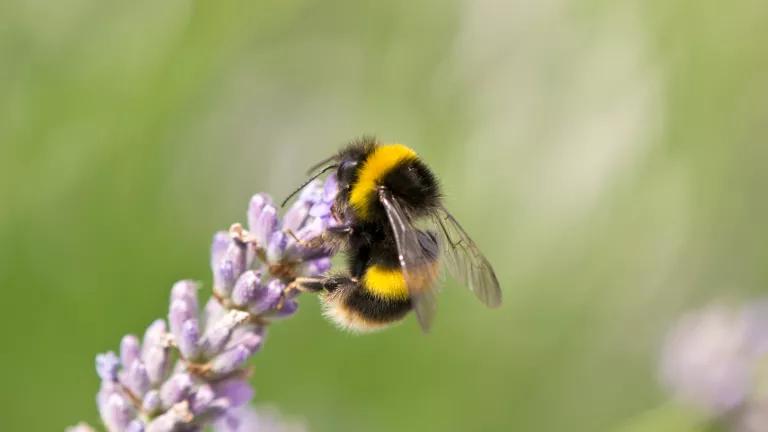Progress in CA on Protecting People and Wildlife from Toxic Neonics
Just in time for spring, we’re seeing movement in California to curtail harmful and unnecessary uses of neonicotinoid insecticides, or “neonics.”

A mother and her young daughter working in their garden. Lawn and garden use of neonics is a significant and untracked source of widespread pollution in urban and suburban areas.
Getty Images
California’s Department of Pesticide Regulation (DPR) recently took the first steps toward stronger oversight of use of harmful pesticides in gardens and golf courses across the state. Thanks in part to last year’s AB 363, a bill authored by Assemblymember Rebecca Bauer-Kahan and co-sponsored by NRDC, Environment California, and the American Bird Conservancy, DPR must scrutinize the potential harms from use of neonicotinoid insecticides (“neonics”) within the next two and a half years. DPR initiated the process last week, signaling that the agency is taking the bill’s directives seriously.
Meaningful, comprehensive review of the health and environmental threats from these chemicals could lead to protective mitigation measures. This kind of review is possible through a process called “reevaluation”—the process DPR has now initiated for non-agricultural neonic uses. DPR reevaluates pesticides when it finds that a significant adverse impact has occurred or is likely to occur. However, reevaluations are notoriously infrequent and slow (DPR just closed out the reevaluation of agricultural uses of neonics that began 15 years ago). AB 363 directs a much faster turnaround for reevaluation, as well as a more comprehensive approach: DPR must complete new human health risk assessments and look at the impacts of non-agricultural uses of neonics on “pollinating insects, aquatic organisms, and human health,” including the cumulative impacts of exposure to multiple neonics that have similar mechanisms of toxicity. In contrast, the agricultural reevaluation only looked at honeybees and pollinators.
The focus on bees in the agricultural reevaluation was warranted. Overwhelming scientific evidence links neonic use to massive bee population losses, including worldwide academic assessments (see here and here), extensive Cornell University research, and even a major pesticide-industry-funded field study—the largest to date. One neonic-coated crop seed can contain enough active ingredient to kill a quarter of a million bees, with even near infinitesimal neonic exposures causing debilitating harms. The agricultural revaluation resulted in new neonic regulations that went into effect January. DPR claims the new restrictions will reduce the amount of neonics applied in California agriculture by approximately 45%.
However, harms from neonics are not limited to bees. Recent water testing by DPR found neonics in 93% of surface water samples in urban areas of Southern California, and 67% of similar samples in Northern California. This chronic pollution wipes out aquatic insects and other life that other animals depend on as a food source, leading to mass losses of birds and fish. Further, chronic contamination means Californian’s may find neonics in their drinking water. A recent nationwide study of 171 pregnant women found neonics in the bodies of over 95% of women—with the highest rates in Hispanic women, and the detection levels and frequency steadily increasing for all participants over the 4-year study. The results suggest worsening neonic exposure from earlier CDC monitoring that found neonics in the bodies of half the U.S. population—and the highest levels in children. This is particularly concerning given research linking neonics to neurological, developmental, and reproductive harms in people, including malformations of the developing heart and brain.
The more comprehensive scope of the non-agricultural reevaluation, paired with human health risk assessments, should lead DPR to address and mitigate these types of threats from neonic use. Moving forward, DPR’s actions on neonics should align with other efforts in California and states throughout the country to reduce use of harmful pesticides. NRDC is currently in active litigation with DPR aimed at ensuring that the agency effectively regulates pesticide-coated crop seeds, including those treated with neonics. We also continue to monitor the state’s progress implementing the Sustainable Pest Management Working Group’s Roadmap for California. Governor Newsom’s January budget included a proposal to grow DPR’s budget with increases to the pesticide mill fee charged on pesticide sales in the state. NRDC supports funding increases for DPR, provided that California’s leadership ensures that as the agency’s budget grows, so do DPR’s actions to protect our health and the environment.




